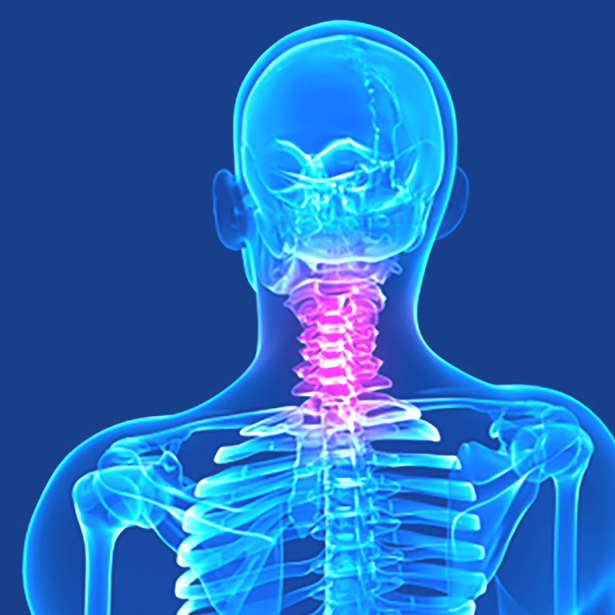
Our treatments provide pain relief for many varing conditions, including
Subluxation – Dislocated vertabrea often causing trapped/pinched nerves.
Osteoarthritis in the Lumbar Spine – Arthritis symptoms in the vertebrae
Postural Syndrome – Pain caused by poor posture
Cervical Facet Irritation – Irritations between the vertebrae
Cervical Facet Syndrome – Widespread pain around the neck, shoulders and upper back.
Spinal Decompression
In the past, a patient suffering from disc problems was given medicated pain relief, instructed to refrain from physical activities, referred for physical therapy, and in many cases sent for spinal surgery, thankfully today there’s Spinal Decompression.
Spinal Decompression was developed to effectively treat lower back pain and sciatica resulting from herniated or deteriorated discs. It not only significantly reduces back pain in many patients, but also enables the majority of patients to return to more active lifestyles.
Does Spinal Decompression really work?
The simple answer is yes!
Spinal Decompression has been proved effective in relieving the pain associated with bulging and herniated discs, degenerative disc disease, sciatica, and even relapse or failed back surgery. Clinical studies have also revealed an amazing success rate in treating lumbar disc related problems with Spinal Decompression.
How does it work?
Spinal Decompression uses state of the art technology to apply a distraction force to relieve nerve compression often associated with low back pain and sciatica. See video for a more detailed explanation.
The Joint from Viv van der Holst on Vimeo.
How do I get started?
Call us on +353 (1) 412 4754 to schedule an initial consultation with our Doctors. At this meeting we will determine if you are a suitable candidate for Spinal Decompression Treatment. If we find you are, then after carefully studying your case history and exam findings, we will go through a plan of action for you, and after answering any questions you may have about the recommended plan, you will begin your treatment, and the road to a pain free, more active lifestyle.
FAQ
If I undergo Spinal Decompression treatment, how long does it take to see results?
Most patients report a reduction in pain after the first few sessions. Typically, significant improvement is obtained by the second week of treatment.
Do I qualify for Spinal Decompression treatment?
Since I began using Spinal Decompression spinal disc decompression unit, I’have been inundated with questions from both doctors and patients as to which cases it will best help. Obviously proper patient selection is essential to favorable outcomes, so let me explain to you of the Inclusion and Exclusion criteria so you may make the right decision since not everyone qualifies for Spinal Decompression treatment.
Inclusion Criteria:
Pain due to herniated and bulging lumbar discs that is more than four weeks old
Recurrent pain from a failed back surgery that is more than six months old.
Persistent pain from degenerated disc not responding to four weeks of therapy.
Patients available for four weeks of treatment protocol.
Patient at least 18 years of age.
Exclusion Criteria:
Appliances such as pedicle screws and rods
Pregnancy
Prior lumbar fusion less than six months old
Metastatic cancer
Severe osteoporosis
Spondylolisthesis (unstable)
Compression fracture of lumbar spine below L-1 (recent).
Pars defect
Pathologic aortic aneurysm.
Pelvic or abdominal cancer
Disc space infections
Severe peripheral neuropathy
Hemiplegia, paraplegia, or cognitive dysfunction.
Are there any side effects to the treatment?
Most patients do not experience any side effects. Though, there have been some mild cases of muscle spasm for a short period of time.
How does Spinal Decompression separate each vertebra and allow for decompression at a specific level?
Decompression is achieved by using a specific combination of spinal positioning and varying the degree and intensity of force. The key to producing this decompression is the gentle pull that is created by a logarithmic curve. When distractive forces are generated on a logarithmic curve the typical proprioceptor response is avoided. Avoiding this response allows decompression to occur at the targeted area.
Is there any risk to the patient during treatment on Spinal Decompression ?
NO. Spinal Decompression is totally safe and comfortable for all subjects. The system has emergency stop switches for both the patient and the operator. These switches (a requirement of the FDA) terminate the treatment immediately thereby avoiding any injuries.
How does Spinal Decompression treatment differ from ordinary spinal traction?
Traction is helpful at treating some of the conditions resulting from herniated or degeneration. Traction cannot address the source of the problem. Spinal Decompression creates a negative pressure or a vacuum inside the disc. This effect causes the disc to pull in the herniation and the increase in negative pressure also causes the flow of blood and nutrients back into the disc allowing the body’s natural fibroblastic response to heal the injury and re-hydrate the disc. Traction and inversion tables, at best, can lower the intradiscal pressure from a +90 to a +30 mmHg. Spinal Decompression is clinically proven to reduce the intradiscal pressure to between a -150 to -200 mmHg. Traction triggers the body’s normal response to stretching by creating painful muscle spasms that worsen the pain in affected area.
Can Spinal Decompression be used for patients that have had spinal surgery?
In most cases Spinal Decompression treatment is not contra-indicated for patients that have had spinal surgery. In fact many patients have found success with Spinal Decompression after a failed back surgery.
Who is not a candidate for Spinal Decompression therapy?
Anyone who has recent spinal fractures, surgical fusion or metallic hardware, surgically repaired aneurysms, infection of the spine, and/or moderate to severe osteoporosis.
Who is a candidate for Spinal Decompression ?
Anyone who has been told they need surgery but wishes to avoid it, anyone who has been told there is nothing more available to help, anyone who failed to significantly respond to conservative options (medications, physical therapy, injections, chiropractic, acupuncture), or anyone who still has pain but wishes to obtain the type of care they want.
